Qualcomm Snapdragon X Elite and X Plus: Specs, release date, benchmarks, and more
The next big push for Windows on Arm is coming, with Oryon cores.
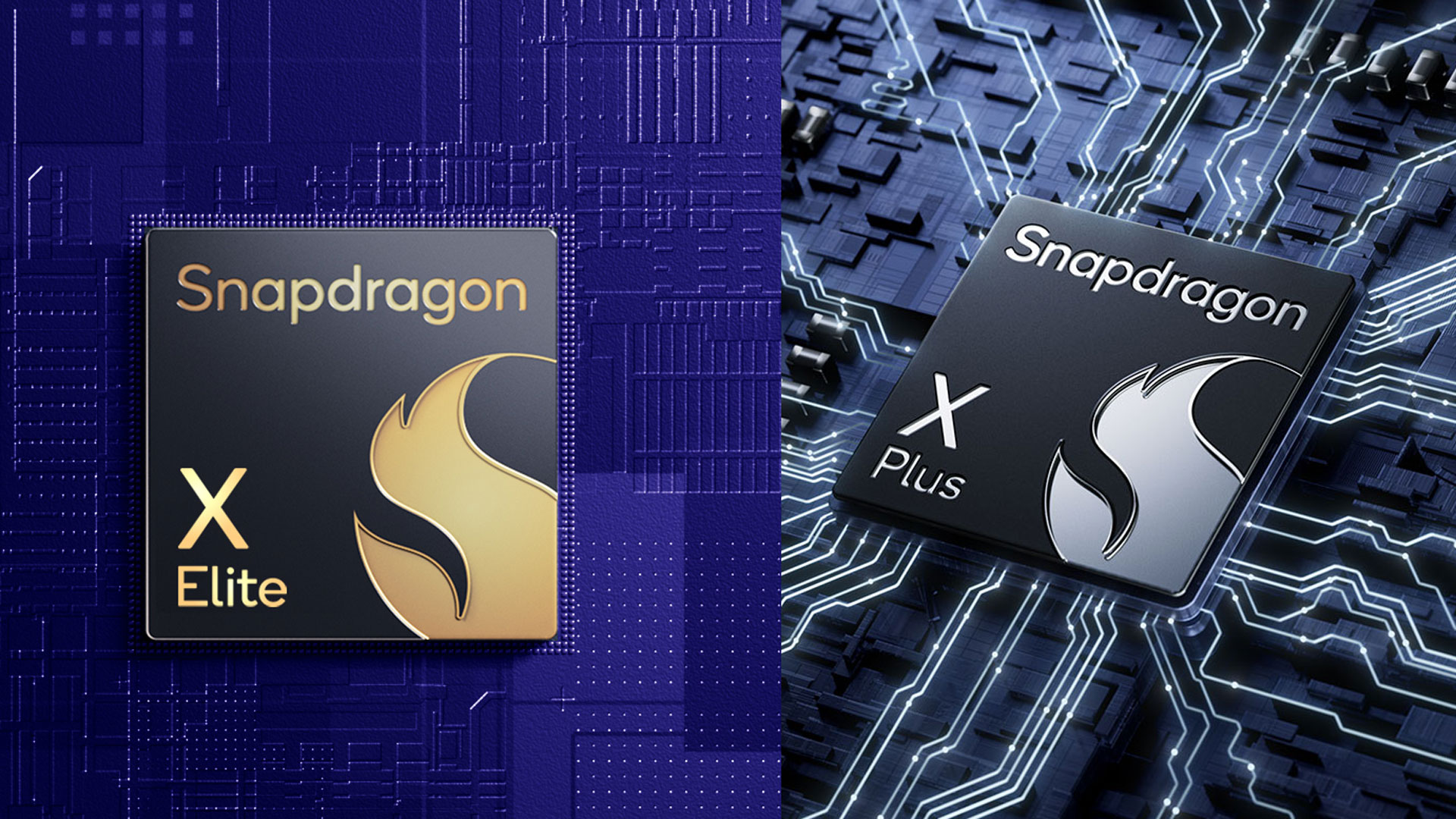
Qualcomm and Microsoft have tried to make Windows on Arm a serious platform for years, and this next big swing is the most promising shot yet. In mid-2024, the first devices with Qualcomm's new Snapdragon X Series processors — the Snapdragon X Elite and Snapdragon X Plus — are poised to ship.
This time, things may be different. Qualcomm's X Elite and X Plus are based on the company's new Oryon cores, which the company is betting on for more power and efficiency. Following Apple's success with its M-series chips, Qualcomm is looking to prove what Arm can do for Windows notebooks, aiming for thin, long-lasting, powerful PCs.
And in keeping with the times, these processors are also being touted as artificial intelligence powerhouses. Each carries an NPU capable of 45 trillion operations per second (TOPS), which Qualcomm is calling "the world's fastest NPU for laptops." Intel's existing Core Ultra "Meteor Lake" processors have NPUs that support 10 TOPS, while AMD's 8040-series "Hawk Point" goes up to 16 TOPS. This means Qualcomm will offer a significant advantage (at least, until Intel's Lunar Lake launches). There have been many rumors about a version of Windows 11 that runs some AI elements locally, and the X Series chips may be some of the first to enable that.
Among Windows machines, the Snapdragon X Elite and X Plus are a chance to show off what Arm can do. If it succeeds, it will be incredibly disruptive to the x86-dominated mobile market.
Qualcomm Snapdragon X Elite and X Plus at a glance
- Qualcomm Oryon CPU: 12-core Snapdragon X Elite, 10-core Snapdragon X Plus
- Qualcomm Adreno GPU
- Qualcomm Hexagon NPU
- Qualcomm Sensing Hub
- Snapdragon X Elite: 75 TOPS across CPU, GPU, NPU, and micro NPU (45 TOPS from NPU)
- 4nm TSMC process
- Coming "mid-2024"
- Supports up to 64GB LPDDR5, with 136 GB/s memory bandwidth
- Wi-Fi 6, 6E, and 7 support, along with Snapdgargon X65 5G Modem
- Will be used by at least 9 OEM partners
Qualcomm Snapdragon X Elite and Plus specifications and features
Qualcomm's Snapdragon X Elite and X Plus are the first processors to use Qualcomm's new Oryon cores. The Oryon cores come from Nuvia, a startup that Qualcomm bought back in 2021 for $1.4 billion.
The Snapdragon X Elite will have 12 cores running up to 3.8 GHz, or up to 4.3 GHz using single- and dual-core boost. The Snapdragon X Plus has a 10-core CPU, running up to 3.4 GHz on all cores.
The GPU is a Qualcomm Adreno that promises up to 4.6 TFLOPS. The X Elite includes support for up to a 4K/120 Hz display and up to triple 4K external monitors. (This beats some of Apple, the other big Arm competitor, on some chips. M3 laptops can handle two external monitors, but only with the lid closed. The m3 Pro can handle two external displays with the laptop screen, while the M3 Max can handle three external screens with the laptop open.) The NPU, dubbed Hexagon, is rated for 45 TOPS.
Stay On the Cutting Edge: Get the Tom's Hardware Newsletter
Get Tom's Hardware's best news and in-depth reviews, straight to your inbox.
Qualcomm hasn't listed a specific TDP for these chips, though we've previously been told that Qualcomm "dynamically scales performance across various TDPs[.]" That seems to suggest there will be some room for OEMs to decide how to use these systems, including the possibilities of clamshells, 2-in-1s, and both fanless and actively cooled machines. (Intel and AMD also offer configurable TDPs, though those companies publish more concrete numbers.)
Another, smaller NPU, the "Micro NPU," is on a part of the chip that Qualcomm calls the "sensing hub," which also includes the Qualcomm Spectra image signal processor (ISP) and a DSP.
Qualcomm Snapdragon X Series Platform Specs
| Header Cell - Column 0 | Qualcomm Snapdragon X Elite | Qualcomm Snapdragon X Plus |
|---|---|---|
| CPU | Qualcomm Oryon, 12 cores up to 3.8 GHz, 42MB total cache Single and dual-core boost up to 4.3 GHz | Qualcomm Oryon, 10 cores up to 3.4 GHz. 42MB total cache, no single or dual-core boost |
| GPU | Qualcomm Adreno, up to 4.6 TFLOPS | Qualcomm Adreno, up to 3.8 TFLOPS |
| NPU | Qualcomm Hexagon, 45 TOPS | Qualcomm Hexagon, 45 TOPS |
| Process Node | TSMC 4nm | TSMC 4nm |
| Memory | Up to 64GB LPDDR5X-8448 | Up to 64GB LPDDR5X-8448 |
| Camera | Qualcomm Spectra ISP, UP to 64MP single camera, Dual camera 2x 36 MP, 4K HDR video capture | Qualcomm Spectra ISP, UP to 64MP single camera, Dual camera 2x 36 MP, 4K HDR video capture |
| Cellular Modem | Snapdragon X65 5G | Snapdragon X65 5G |
| Wi-Fi and Bluetooth | Qualcomm FastConnect 7800; Wi-Fi 6, 6E, 7, up to Bluetooth 5.4 | Qualcomm FastConnect 7800; Wi-Fi 6, 6E, 7, up to Bluetooth 5.4 |
(A note on the memory: Qualcomm previously listed the Elite's transfer speed at 8533 MT/s, but has since changed it to 8448 MT/s.)
Qualcomm Snapdragon X Series Processor Specs
We know there will be multiple configurations of the Snapdragon X Elite chips, but there has only been one Plus chip announced so far.
There are three Snapdragon X Elite chips:
- Snapdragon X Elite X1E-84-100
- Snapdragon X Elite X1E-80-100
- Snapdragon X Elite X1E-78-100
The sole Snapdragon X Plus is the X1P-64-100.
All three Elite chips use 12 cores, but their speeds vary. The top chip, the X1E-84-100, goes up to 3.8 GHz on multi-threaded workloads, and can hit 4.2 GHz with dual-core boost. The X1E-80-100 goes up to 3.4 GHz and 4.0 GHz, respectively, while the X1E-78-100 also goes up to 3.4 GHz on multi-threaded tasks, but doesn't offer dual-core boost.
The name Snapdragon X Plus suggests it's above at least one more chip, but Qualcomm hasn't made any other announcements yet, so we can only speculate.
| Header Cell - Column 0 | Snapdragon X Elite X1E-84-100 | Snapdragon X Elite X1E-80-100 | Snapdragon X Elite X1E-78-100 | Snapdragon X Plus X1P-64-100 |
|---|---|---|---|---|
| Cores | 12 | 12 | 12 | 10 |
| Total Cache | 42MB | 42MB | 42MB | 42MB |
| Max Multi-thread Frequency | 3.8 GHz | 3.4 GHz | 3.4 GHz | 3.4 GHz |
| Dual Core Boost | 4.2 GHz | 4.0 GHz | None | None |
| TFLOPS (Qualcomm Adreno GPU) | 4.6 | 3.8 | 3.8 | 3.8 |
| NPU TOPs (Qualcomm Hexagon NPU) | 45 | 45 | 45 | 45 |
| Memory | LPDDR5X-8448 | LPDDR5X-8448 | LPDDR5X-8448 | LPDDR5X-8448 |
The Snapdragon X Plus X1P-64-100 has 10 cores, and the same 3.4 GHz for multi-threaded performance.
Each of the chips has the same 45 TOPS of performance from the Hexagon NPU. The top Elite chip offers 4.6 TFLOPS of GPU performance, while the entire rest of the lineup drops to 3.8 TFLOPS.
These names are lengthy, to say the least. Qualcomm already has a decoder for it.
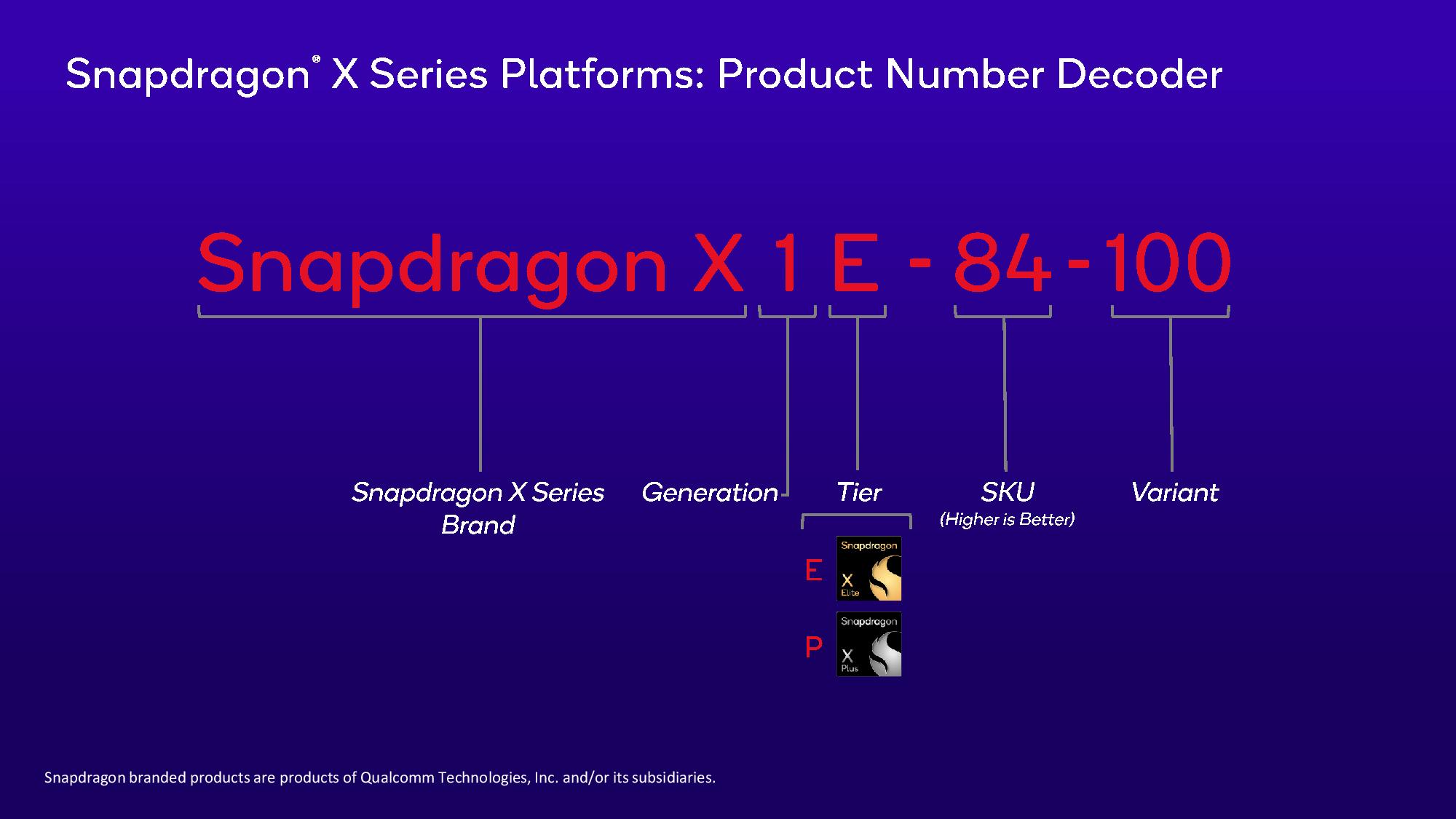
After Snapdragon X, the first number (in all of these instances, 1), marks the generation of the chip. E stands for Elite, while P is Plus. Easy enough so far.
The next number serves as the SKU level. In other words, on a platform like Elite, where there are three options, the higher numbers mean more powerful chips. The 84 is the top chip, followed by the 80, and 78. The Snapdragon X Plus tops out at 64. It's unclear if these are on some sort of scale out of 100, or why 84 is the current top number. It seems kind of arbitrary, but it does leave room for more powerful chips.
The last three numbers, which are all "100," are marked as "variants." It's unclear what exactly Qualcomm means by that, and the company didn't tell us when we asked.
"We are not disclosing any further details at this time," Qualcomm spokespeople wrote in an email. "These variant numbers can be used for future products."
Qualcomm Snapdragon X Series benchmarks
When we got to see the Qualcomm Snapdragon X Elite in a controlled hands-on, the company had published the following benchmarks:
Snapdragon X Elite X1E80100 (3.4 GHz), paired with 16GB of RAM:

Snapdragon X Elite X1E84100 (3.8 GHz), paired with 64GB of RAM:
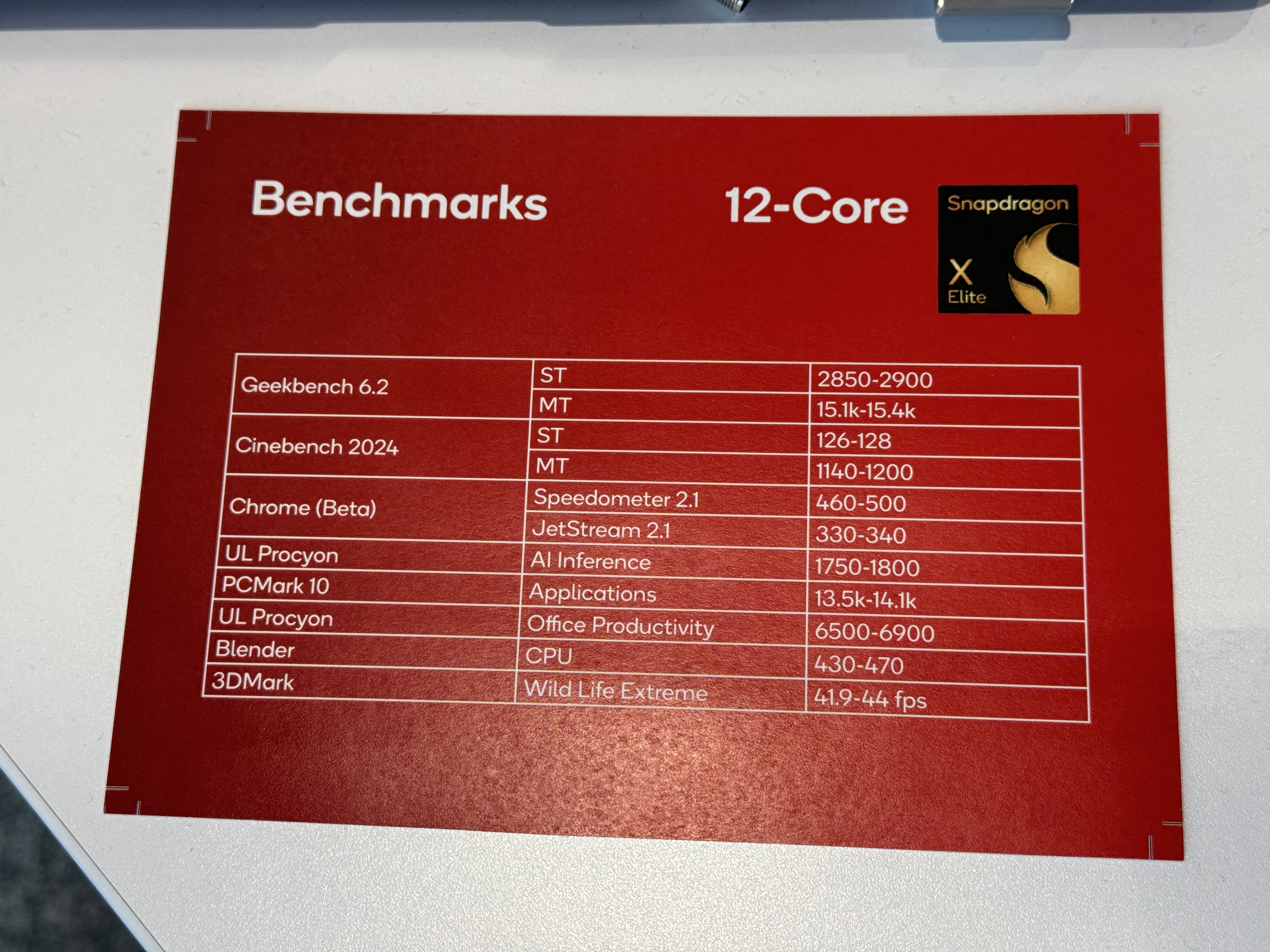
As we wrote in our hands-on, we found that these benchmarks (albeit very controlled benchmarks that were pre-installed), appeared within Qualcomm's range. One run of Geekbench on the 3.4 GHz processor was slightly lower, but everything else was either in range or even better than what Qualcomm suggested. Of course, we'll need to see these chips in retail laptops to get an idea of what the real experience will be like.
There have also been a handful of leaked Geekbench results, but it's hard to verify if they're real. Some of them do fall in line with Qualcomm's suggestions, while others fall below, though it's hard to know if new drivers have changed things, or if there are more configurations we don't know about.
We've also been hands-on briefly with a reference design using the Snapdragon X Plus:

Again, we saw numbers that matched the claims (and sometimes the claims were conservative), in Qualcomm's controlled situation.
Qualcomm has made a number of claims that we'll only be able to verify once we have laptops to test.
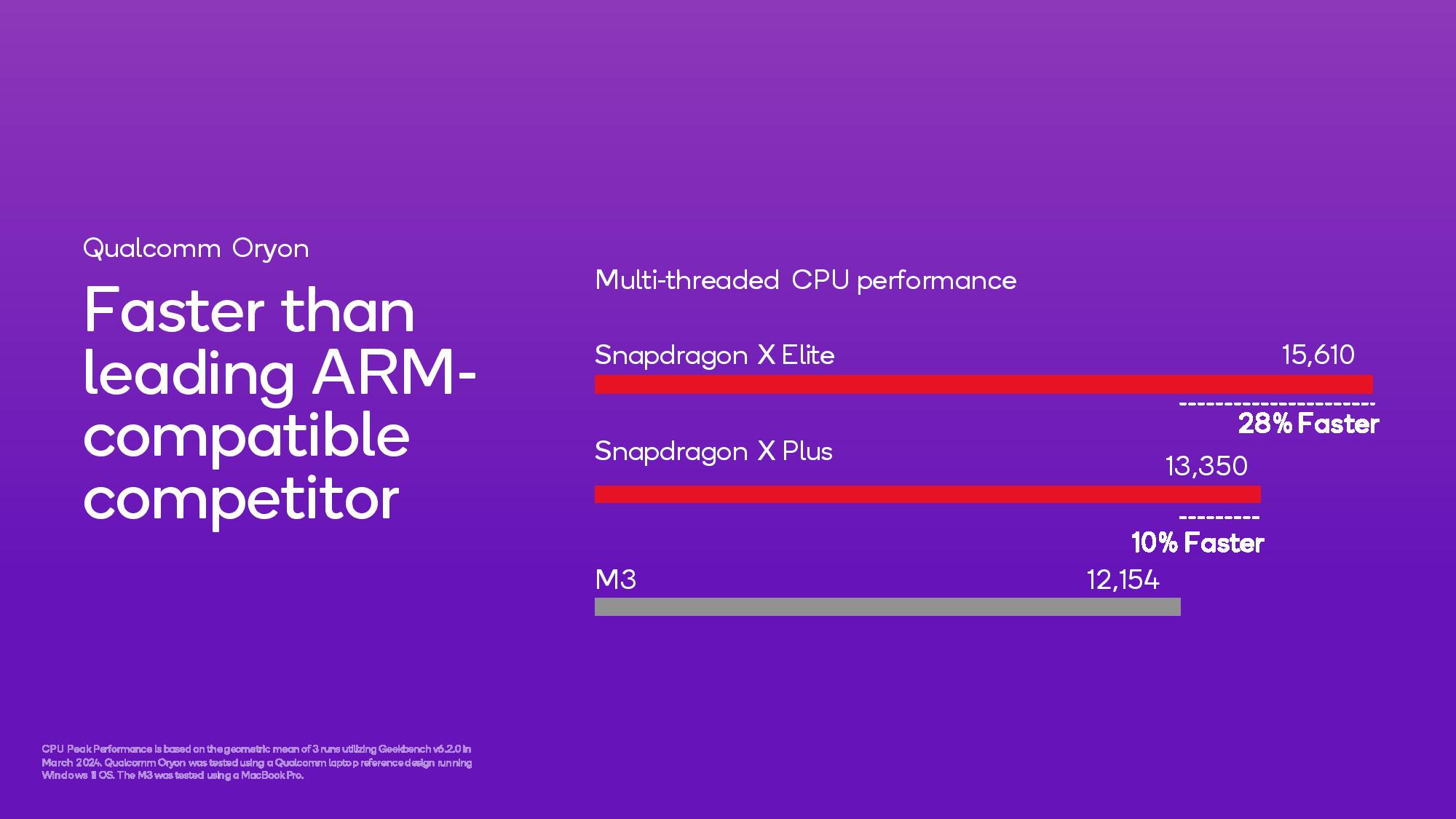
The only test that Qualcomm has shared against Apple is multi-threaded CPU performance in Geekbench 6.2 (the M3 was tested in a MacBook Pro), where the X Elite was 28% faster and the X Plus was 10% faster than M3. Qualcomm should beat Apple here: M3 has 8 cores, while Snapdragon X Plus has 10 cores and X Plus has 12 cores. Single-core performance was notably compared, and Apple's 12-core M3 Pro and 14-core or 16-core M3 Max were left out.
In many of Qualcomm's tests, it claims that the Snapdragon X Elite and X Plus are faster than the Intel Core Ultra 7 155H and AMD Ryzen 9 7940HS and can match peak performance at less power:


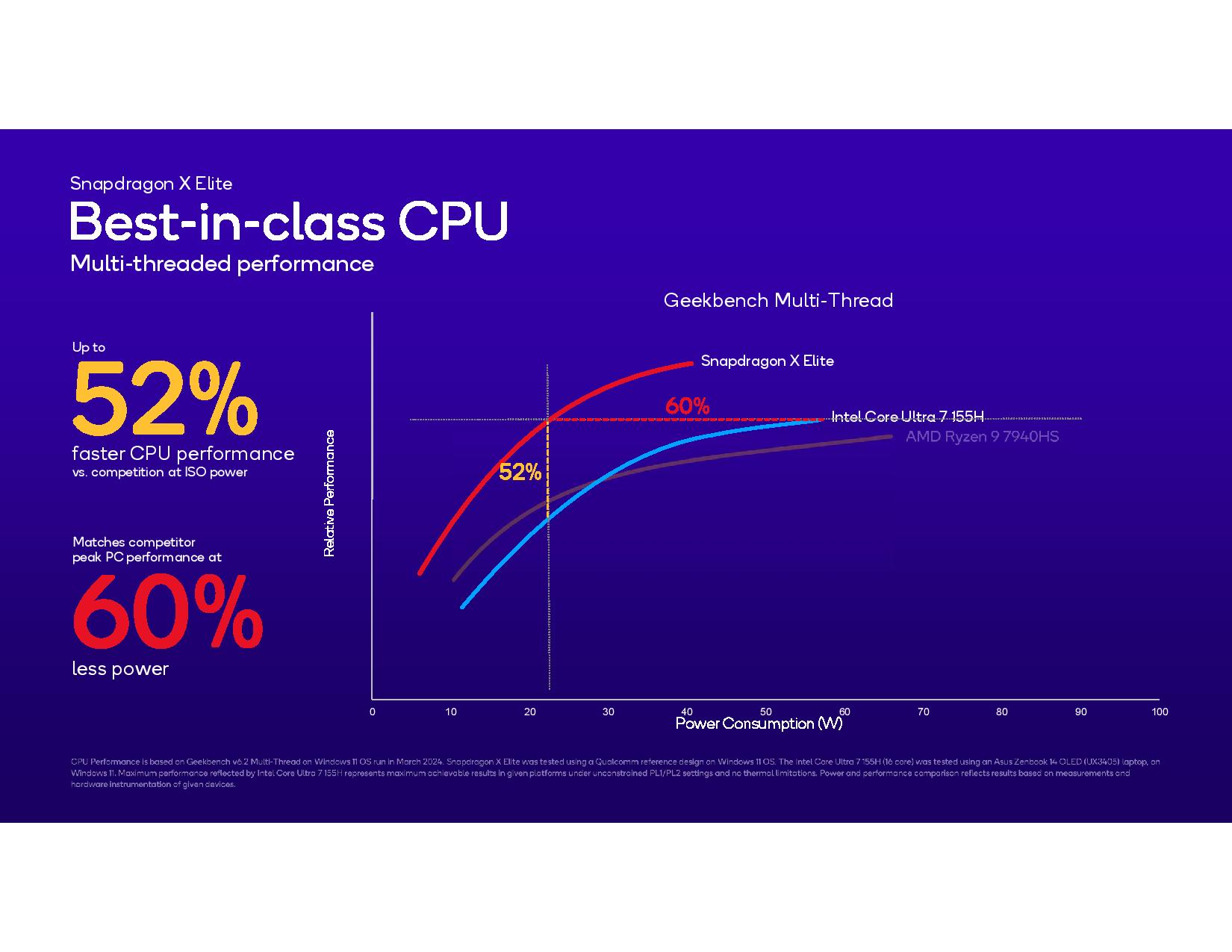

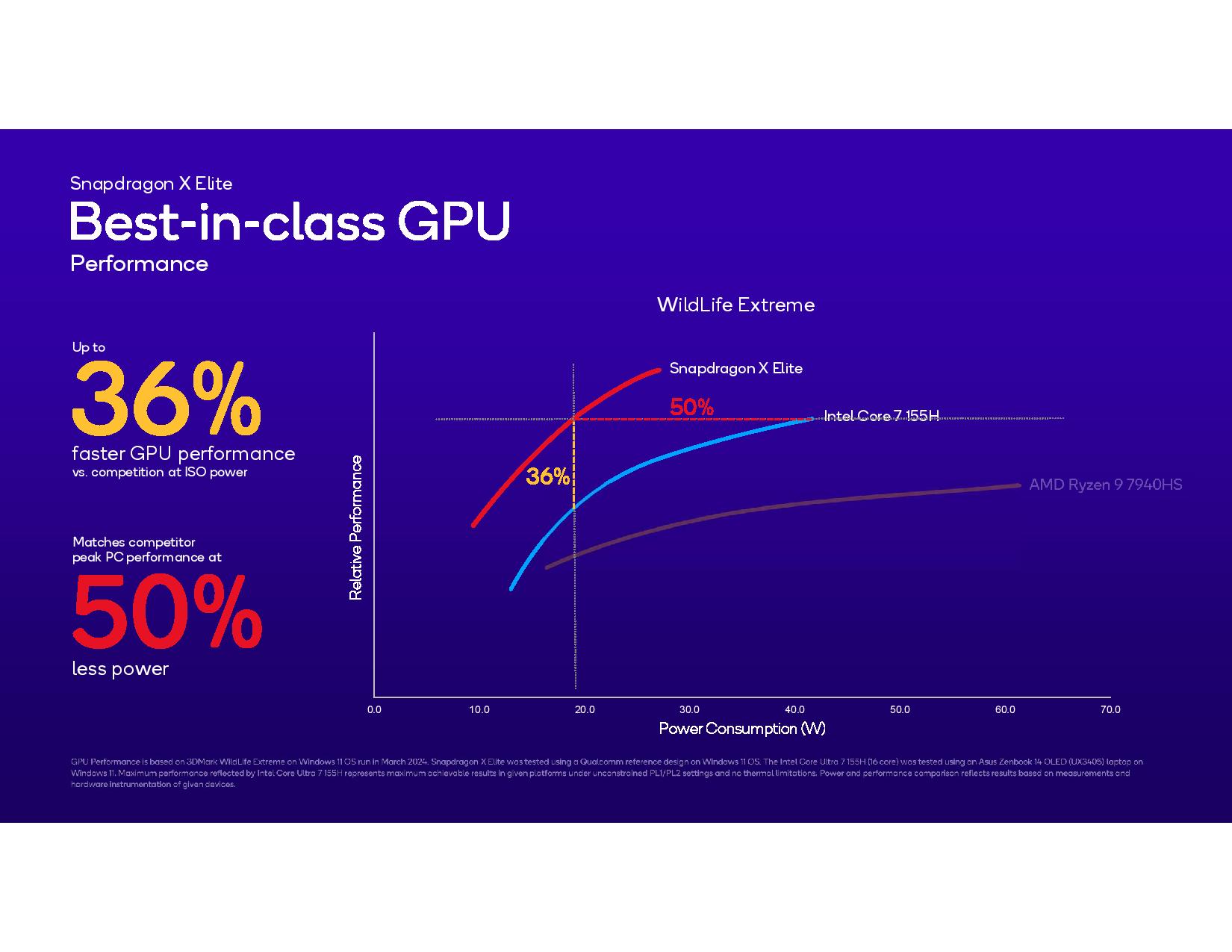


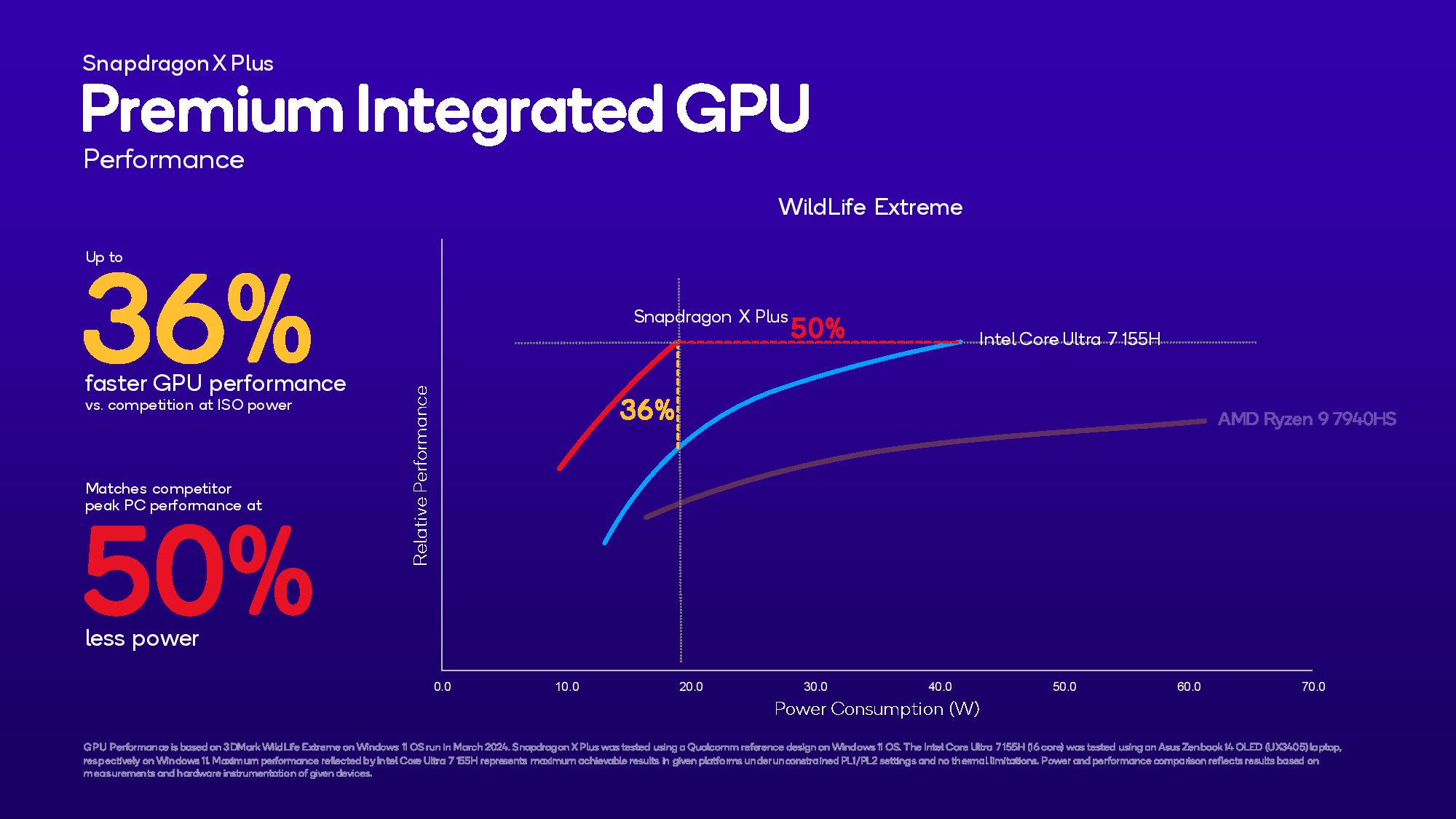
Granted, now we know that Qualcomm has various X1 Elite chips, so we'll have to see in our own testing how each one stacks up against the competition — and against each other.
Qualcomm Snapdragon X Series laptops
There aren't any Qualcomm Snapdragon X Elite or Plus laptops available yet, nor have any been officially announced. But at the 2023 Qualcomm Snapdragon summit, the company said it was partnering with Acer, Asus, Dell, HP, Honor, Lenovo, Microsoft Surface, Samsung, and Xiaomi. Otherwise, it has just been showing off its bright red reference notebooks.
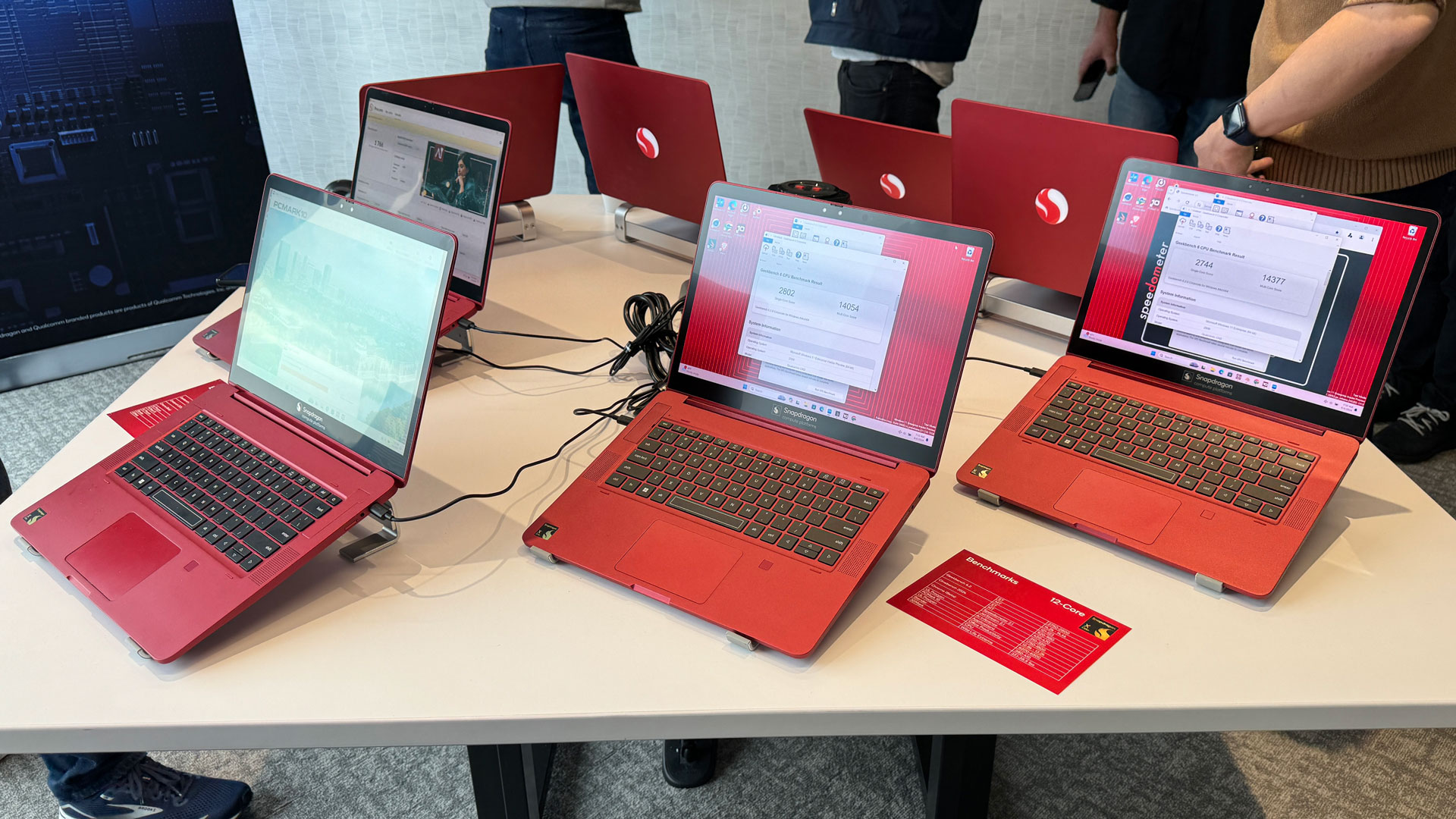
Qualcomm's mockups in presentations have suggested that we'll see a mix of clamshells, foldable 2-in-1s, and detachable 2-in-1s.
There have been a number of rumors about laptops using the new Snapdragon X chips. Earlier this year, Microsoft announced business versions of the Surface Pro 10 and Surface Laptop 6, but not consumer version; rumors suggest those will have these new chips. We've also seen reports of a new Samsung laptop, the Galaxy Book 4 Edge to use these processors, as well as leaks of Lenovo's ThinkPad T14s Snapdragon Edition and Yoga Slim 7 14 Snapdragon Edition.
ThinkPad T14s Snapdragon edition pic.twitter.com/1lc1IW3WKfApril 17, 2024
Qualcomm Snapdragon X Series pricing and availability
Qualcomm says its Snapdragon X Elite and Plus chips will show up in laptops in "mid-2024," which means we should see them in the next few months.
We don't yet know pricing, but the impression that we get is that these chips — especially the ones running the X Elite processors — are meant to be for high-end systems. We'll get a better idea when the actual laptops are announced.
Will Qualcomm Snapdragon X Series work with more Windows apps?
If you remember Qualcomm's previous Snapdragon for Windows chips, you'll know that Microsoft needed to do emulation work to get everything running. Back then, you couldn't run most games, antivirus, and a number of other applications.
That should be better this time around. Snapdragon has shown off games such as Control and Baldur's Gate 3 running in emulation.

Qualcomm has also stated that there are more native apps. Most notably, there's now an ARM64 version of Chrome. Microsoft has been pushing for more native Arm apps since the release of its developer kit, previously known as Project Volterra. Either way, through emulation or native apps, we're hoping to see better performance and fewer issues.
Microsoft Build is coming up, and we expect to hear a lot about the future of Windows 11 on Arm and AI on the platform there. We’ll of course update this article when we learn more.
Andrew E. Freedman is a senior editor at Tom's Hardware focusing on laptops, desktops and gaming. He also keeps up with the latest news. A lover of all things gaming and tech, his previous work has shown up in Tom's Guide, Laptop Mag, Kotaku, PCMag and Complex, among others. Follow him on Threads @FreedmanAE and Mastodon @FreedmanAE.mastodon.social.
-
Notton I hope you folks get to review one soon, because the slide claiming GPU performance is crazy.Reply
We already know that it hits a smooth 1080p 30fps with medium setting in Baulder's Gate 3, but we also know that Z1 Extreme (7840U) can do the same with slightly higher settings.
-
Alvar "Miles" Udell If they're targeted for high end systems first then they're going to flop, since the M3 Macbook Air and Pro are already well established in that segment and have proven performance. They need to target them at the sub $750 market, undercutting the MacBook Air, moving great volumes for students, travelers, and other segments, and proving Windows On Arm and Snapdragon are viable, then they can go after the $1000+ market.Reply -
Pierce2623 Reply
It’s wildlife extreme. It’s a mobile benchmark that Qualcomm and Intel both have heavily optimized for. Everybody knows the AMD iGPU beats both in real games.Notton said:I hope you folks get to review one soon, because the slide claiming GPU performance is crazy.
We already know that it hits a smooth 1080p 30fps with medium setting in Baulder's Gate 3, but we also know that Z1 Extreme (7840U) can do the same with slightly higher settings.
-
ivan_vy Reply
remember when M2 was going to kill iGPU and dGPU laptops?Notton said:I hope you folks get to review one soon, because the slide claiming GPU performance is crazy.
We already know that it hits a smooth 1080p 30fps with medium setting in Baulder's Gate 3, but we also know that Z1 Extreme (7840U) can do the same with slightly higher settings.
https://www.tomshardware.com/news/apple-introduces-m2-processor-8-core-cpu-10-core-gpu-up-to-18-more-performanceand MSI Claw with intel chip was going to kill SteamDeck and the like?
let's wait and see real world performance. -
JamesJones44 Reply
Not at a presumed 20 watts thoughNotton said:Z1 Extreme (7840U) can do the same with slightly higher settings -
newtechldtech ReplyAlvar Miles Udell said:If they're targeted for high end systems first then they're going to flop, since the M3 Macbook Air and Pro are already well established in that segment and have proven performance. They need to target them at the sub $750 market, undercutting the MacBook Air, moving great volumes for students, travelers, and other segments, and proving Windows On Arm and Snapdragon are viable, then they can go after the $1000+ market.
The CPU itself is cheap .. what makes APPLE expensive are the hig end components in it , like 6 Speakers and 4 MIC plus the screen and body of the notebook.
I am really waiting for apple to release "student" version of their MACS ,Plastic body and two speakers only and one Mic ...this would lower the MAC air price by $300 at least. and I dont know Why Apple is ignoring tis market. they made "SE" Iphone , and they should make SE MAC AIR. -
Notton Reply
That's uhh, not my point?JamesJones44 said:Not at a presumed 20 watts though
Take a look at the graph
IDK what garbage laptop Qualcomm used to test the 7940HS on, but if you pump 60w into the 12CU GPU, it's not going to run that slow.
Yup, MSI Claw turned out to run SLOWER than Ally Z1 extreme, despite what early rumors suggested.ivan_vy said:remember when M2 was going to kill iGPU and dGPU laptops?
https://www.tomshardware.com/news/apple-introduces-m2-processor-8-core-cpu-10-core-gpu-up-to-18-more-performanceand MSI Claw with intel chip was going to kill SteamDeck and the like?
let's wait and see real world performance.
In fact, MSI Claw performance and battery run times lookl bad compared to Steamdeck OLED. -
JamesJones44 Reply
They are not arguing a pure speed. They are auguring performance per watt which is Qualcomm's point. This is also package SoC wattage, not just iGPU.Notton said:Take a look at the graph -
JamesJones44 Reply
I'm shocked a 10 core cpu beats an 8 core cpu in multi core scores (X Plus vs M3).
When you compare equal core counts it looks like the X Elite is about on par with an M3 Pro (15,610 vs 15,683 respectively).
-
Brian_DM The NPU performance of 45 TOPS should be mentioned that is for Int8 performance.Reply
Most older chip performance is measured by Int16 performance, this is part of the apparent large jump in performance to this new SnapDragon X Plus/Elite
